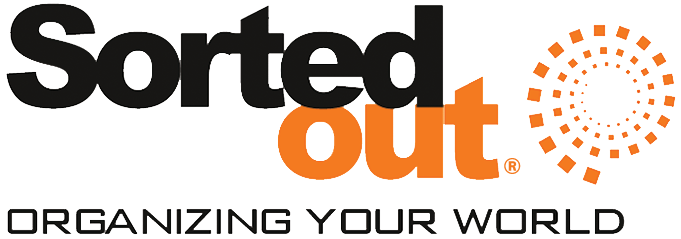Navigating Family Dynamics During Downsizing
Downsizing can be an emotional rollercoaster with seemingly far more “downs” than “ups”. It’s hard to say goodbye; we get it! As leading professionals in this business over the past 20 years, the Sorted Out® experts have done their fair share of downsizing projects. With that experience we like to think our knowledge of not only the organizational process, but the knowledge of how to best navigate family dynamics during these processes has grown exponentially. Read on for our best advice on how to openly communicate, respect differences of opinion, and most painlessly navigate complex family dynamics while downsizing.
When should we begin to downsize? Who should help us with this process?
The earlier you begin the process of downsizing, the easier it will be! Planning early is the best way to ensure you can get everything in order and not feel rushed. This process can be extremely emotional and difficult for many, so the more time you give yourself or your loved ones, the better for everyone involved. If you are able, start as early as possible!
Starting early and communicating openly will make this experience less painful and more productive. Plan a family meeting to discuss the reasons for downsizing and what will be involved in the process. Be transparent about finances, health, and any practical concerns, if any, that might be driving the change. Invite anyone who will be involved to speak up and provide their feedback, but make sure to establish boundaries to keep the process efficient. Clearly define roles as to who will be responsible for making decisions, handling logistics (decluttering/purging, packing, managing the move, etc.), and communicating.
If family tensions are high, seriously consider using a neutral third party, such as a professional organizer or other professionals who specialize in downsizing. (May we recommend Sorted Out®? We hear they’re pretty great at this kind of thing!)
How can I declutter during the downsizing process?
Downsizing is ultimately all about letting go of things, so it’s time to decide what stays and what goes. Use the “one-year rule” – if it hasn’t been used, seen, or touched in a year? Let it go! Create separate piles or sections for “Keep”, “Donate”, “Consign/Sell”, “Pass Me Downs”, and “Trash”. Use bins, boxes, or containers to place items into and label each using sticky notes or label tape.
Set ground rules and limit the number of people to one or two who will assist through this part of the process to avoid things becoming too overwhelming. Be realistic about the new living space and what items will be able to be brought into the space. Focus on functionality, comfort, and safety – not only sentimentality. Compromise whenever possible, but don’t allow sentiment to derail or halt the process. (If you’re running into these delays or disagreements, a neutral third party stepping in to assist might be the best solution!)
How do we handle disagreements or differences of opinion while downsizing?
Downsizing often leads to disagreements because there are generational differences and emotional attachments involved. It’s important to respect these differences and acknowledge these attachments! Stay patient with one another and allow for emotional pauses – downsizing can feel like loss (and in many cases loss might be part of the reasoning for downsizing). Validate your loved ones’ feelings of loss, nostalgia, or resistance to part with items they are emotionally attached to. This can be especially difficult for elderly family members, so it’s important to validate their feelings and give them the time and space to grieve or adjust.
Avoid dismissing sentimentality, even if you don’t feel the same way about the item. Avoid negative emotions or potential disagreements by sharing memories that are associated with the items before letting them go. You might even opt to take photos of items (or hire a professional organizer who can assist with preserving these memories!) Know and understand that older generations of adults might prioritize saving items “just in case” or to pass down to others. Use this knowledge to frame discussions around shared values, legacy, safety, or independence.
What can I do with all this STUFF I (they) still want to keep but don’t have room for?
Thankfully, many of the most sentimentally important items are also the easiest to digitize! Digitizing items such as photos, documents, and lists is the best way to keep and preserve many items, while still downsizing by reducing the physical space they occupy. Offer to digitize photos or documents for sharing or offer to hire a professional (like Sorted Out®!) to help. Have a custom photo or memory book created and utilize cloud storage and/or USB drives to preserve these items. Honestly? People from older generations are more likely to open and flip through a memory book than to get out boxes upon boxes of loose/unorganized photos anyway! Create an inventory list that can be shared with the appropriate individuals to see what’s being kept or passed down to others. (We have more tips for preserving heirlooms and digitizing keepsakes here and here!)
Shred any financial documents or other important papers that no longer need kept. Talk with your CPA or other professionals if you are unsure about what should be saved. Any paperwork or documents that are essential and kept should be organized and stored properly.
What can I do to make the downsizing process easier?
Don’t forget to be mindful throughout the process. Stick to timelines and decisions once they are made and agreed upon. Use downsizing as an opportunity to clarify or update wills and estate plans so those are also in order. Handle valuable or disputed items with legal documentation or impartial guidance.
Celebrate the transition and acknowledge the end of one chapter + the beginning of a new chapter! Host a family dinner or small gathering. As you go through the process, focus on the benefits that downsizing has such as reduced stress, more independence/freedom, and safer living. Allow your aging loved one to have as much input as possible and keep these benefits and your love for them at the forefront.
As mentioned, we have over 20 years of experience and helping clients and their families downsize is one of the most fulfilling projects we tackle. If you or a loved one wants to downsize or even wants input on how to begin planning for their future downsizing, please send us a message at info@sortedout.com. We’d be happy to start discussing next steps or create a plan to get you through the downsizing phase of life with as few downsides as possible.
Looking forward to hearing from you,
Tonia
Ready to get Organized?
Book a Call with Julie!
Request a Consultation
There are so many ways that organization can help take back a space that is overwhelming and bring it to functional!
We are excited to help start your journey to an organized and productive space.






